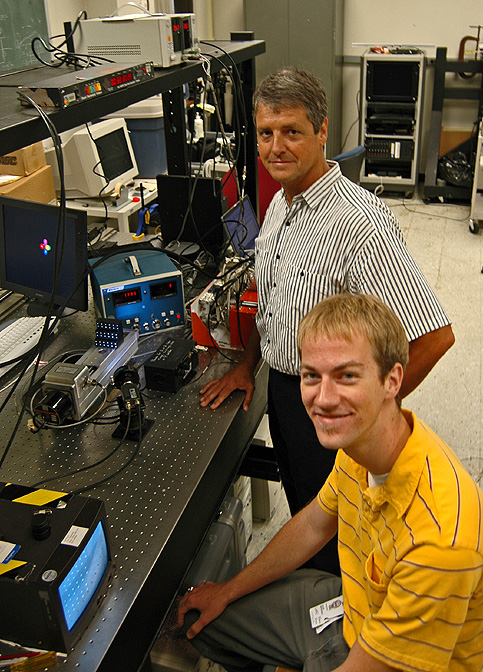On September 18, I participated in NASA’s sixth Future Forum in Boston, Massachusetts,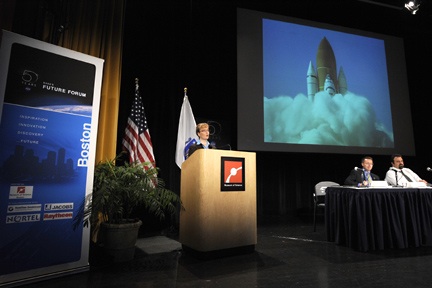 at the Museum of Science. In this month’s Parents magazine, the Museum of Science is ranked the third best science center in the entire country. It is also the most visited cultural institution in New England. You may remember from my previous blogs that Future Forums are a series of one-day events that highlight the benefits of space exploration through the themes of inspiration, innovation and discovery and connect those themes to a local, regional and state perspective. They also provide a venue to educate the public about the future of space exploration.
at the Museum of Science. In this month’s Parents magazine, the Museum of Science is ranked the third best science center in the entire country. It is also the most visited cultural institution in New England. You may remember from my previous blogs that Future Forums are a series of one-day events that highlight the benefits of space exploration through the themes of inspiration, innovation and discovery and connect those themes to a local, regional and state perspective. They also provide a venue to educate the public about the future of space exploration.
Similar to the other Future Forums, the Boston event relied heavily on our partners in the local area. An impressive group of individuals from academia and industry graciously volunteered their time to participate in our inspiration, innovation, and discovery panels. Dr. Ioannis Miaoulis, President of the Museum of Science, was our gracious host for the day and participated on the Inspiration panel, “Building Idea Factories for the Future.” We had Drs. Jeff Hoffman, Dava Newman and Larry Young from MIT; Drs. Charles Czeisler and Harvey Tananbaum from Harvard; and Dr. Isa Zimmerman from the University of Massachusetts. From industry, we had Ms. Helen Greiner, CEO, iRobot, and Ms. Lee Silvestre from Raytheon. We also were pleased to have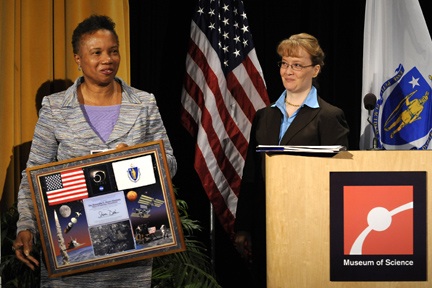 Mr. Joe Sciulli from the National Science Teachers Association. Of course, I must also acknowledge the great contributions from my NASA colleagues: Steve Cook, Jim Garvin, Lesa Roe, Chris Shank, and Joyce Winterton. These partners played a critical role in making the event a success. I am truly grateful for their contributions.
Mr. Joe Sciulli from the National Science Teachers Association. Of course, I must also acknowledge the great contributions from my NASA colleagues: Steve Cook, Jim Garvin, Lesa Roe, Chris Shank, and Joyce Winterton. These partners played a critical role in making the event a success. I am truly grateful for their contributions.
I delivered the keynote and received proclamations from Cambridge Mayor E. Denise Simmons and Boston Mayor Thomas M. Menino congratulating NASA on its 50 years of success. The audience especially enjoyed a presentation by Steve Cook, Ares Program Manager, on the Constellation Program.
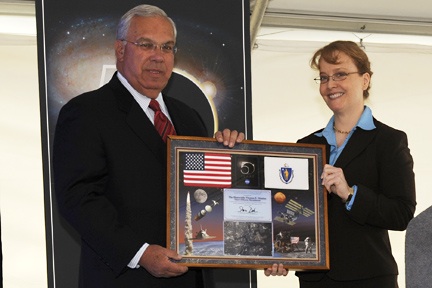 The Boston event also included a luncheon keynote address from Dr. James Garvin, currently the chief scientist for planetary exploration at NASA’s Goddard Space Flight Center. He gave an inspiring talk that focused on the future of science and exploration at NASA and how inextricably they are tied. Dr. Garvin also did a television interview with Boston’s Channel 5, WCVB. This was filmed amid a variety of NASA exhibits that were on display at the Museum for a week. On Sunday preceding the Future Forum, the NASA exhibit staff team interacted with more than 5,000 visitors.
The Boston event also included a luncheon keynote address from Dr. James Garvin, currently the chief scientist for planetary exploration at NASA’s Goddard Space Flight Center. He gave an inspiring talk that focused on the future of science and exploration at NASA and how inextricably they are tied. Dr. Garvin also did a television interview with Boston’s Channel 5, WCVB. This was filmed amid a variety of NASA exhibits that were on display at the Museum for a week. On Sunday preceding the Future Forum, the NASA exhibit staff team interacted with more than 5,000 visitors.
The final Future Forum in celebration of NASA’s 50th anniversary will be held on October 10 at the Adler Planetarium in Chicago. You can read more at https://www.nasa.gov/50th/future_forums/index.html.









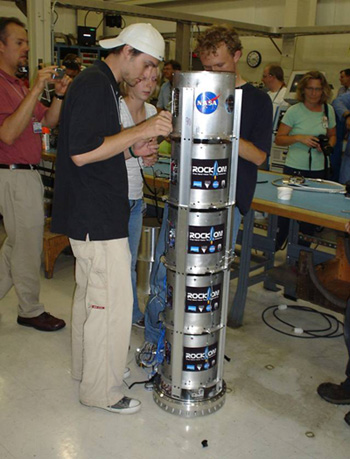 Picture at Left: University faculty and students participate in RockOn! — a workshop June 22-27 at NASA’s Wallops Flight Facility on Wallops Island in Virginia
Picture at Left: University faculty and students participate in RockOn! — a workshop June 22-27 at NASA’s Wallops Flight Facility on Wallops Island in Virginia